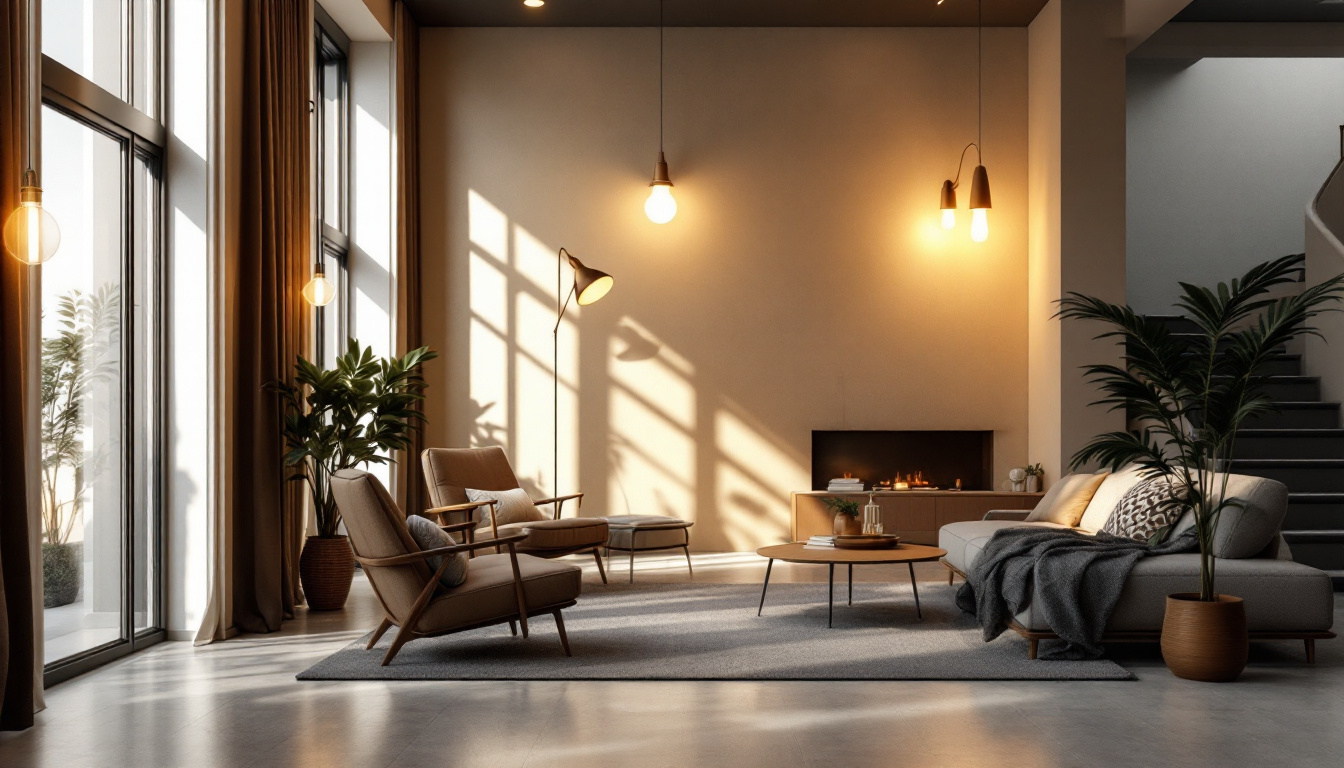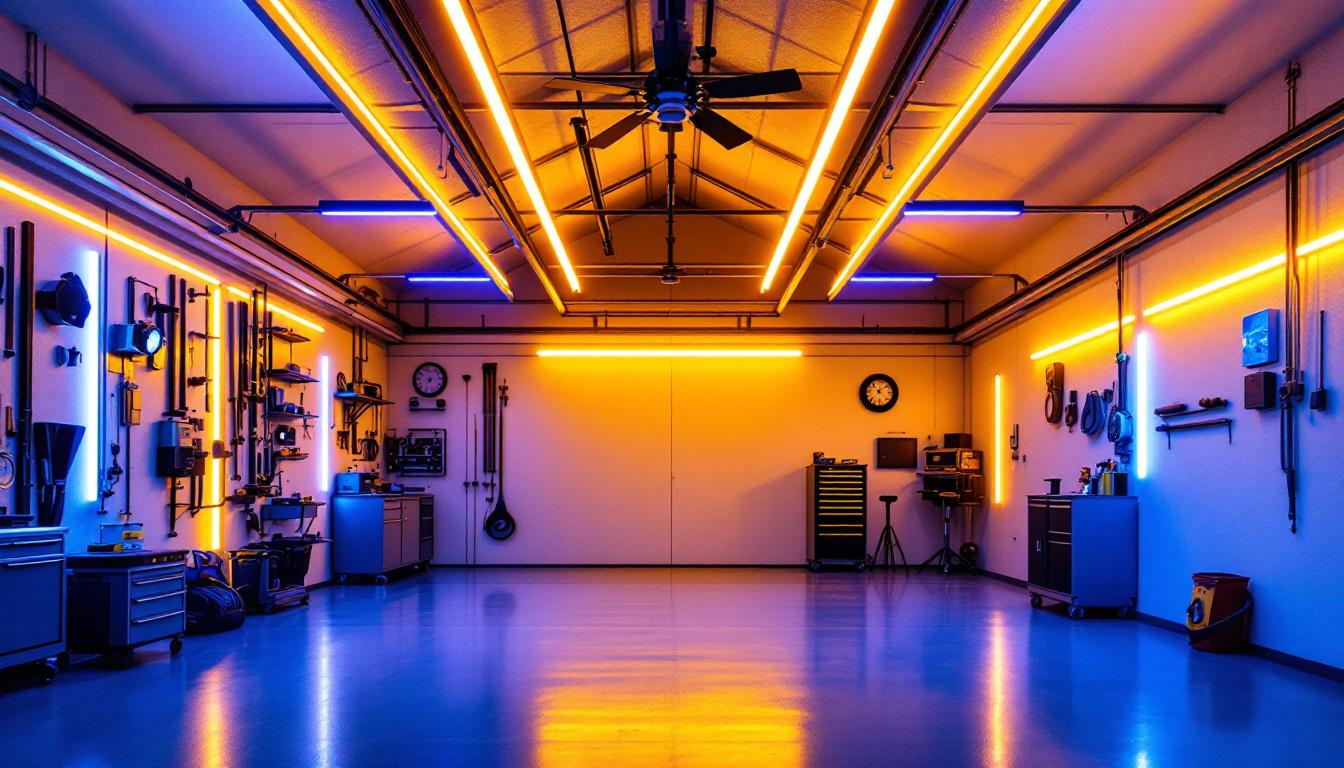
In the ever-evolving world of lighting design and installation, staying ahead of the curve is essential for lighting contractors. With advancements in technology and design trends constantly emerging, it’s crucial to equip oneself with practical knowledge and skills. This article provides a collection of quick tips tailored for lighting contractors, ensuring they can deliver exceptional results while navigating the complexities of their projects.
Before diving into the specifics of installation and technology, it’s important for lighting contractors to grasp the fundamental principles of lighting design. A solid understanding of these basics can significantly enhance the quality of work delivered.
Lighting can be categorized into three main types: ambient, task, and accent lighting. Ambient lighting provides overall illumination, ensuring spaces are well-lit. Task lighting, on the other hand, focuses on specific areas to facilitate activities such as reading or cooking. Accent lighting is used to highlight particular features or objects, adding depth and interest to a space.
Recognizing the appropriate use of these lighting types can help contractors create harmonious environments that meet the needs of their clients. Each type serves a distinct purpose and contributes to the overall aesthetic and functionality of a space. For instance, in a kitchen, ambient lighting can come from ceiling fixtures, while under-cabinet lights serve as task lighting for food preparation. Meanwhile, pendant lights above an island can act as both task and accent lighting, creating a visually appealing focal point.
Color temperature, measured in Kelvin (K), plays a crucial role in how lighting affects the mood and functionality of a space. Warmer tones (2700K-3000K) create a cozy and inviting atmosphere, ideal for residential settings. In contrast, cooler tones (4000K-5000K) are often preferred in commercial spaces as they promote alertness and productivity.
Contractors should consider the intended use of a space when selecting color temperatures. A well-thought-out color temperature can enhance the overall experience of the occupants, making it a vital aspect of lighting design. Additionally, the choice of color temperature can influence the perception of colors within a room. For example, warmer lights can make wood tones appear richer, while cooler lights can enhance the vibrancy of blues and greens. Understanding these nuances allows contractors to tailor their lighting designs to not only meet functional requirements but also to evoke the desired emotional responses from the users.
The selection of lighting fixtures is a critical decision that can influence both the aesthetic and functional aspects of a project. Understanding the various options available can help contractors make informed choices that satisfy their clients’ needs.
LED technology has revolutionized the lighting industry, offering energy efficiency and longevity compared to traditional incandescent or fluorescent bulbs. While the initial investment may be higher, the long-term savings on energy bills and maintenance make LEDs a more sustainable choice.
Contractors should educate their clients about the benefits of LED lighting, including reduced energy consumption and lower heat output. This knowledge can help clients make decisions that align with their sustainability goals. Furthermore, LEDs come in a variety of color temperatures, allowing for customization of the ambiance in any space—from warm, inviting tones for living areas to cooler, more focused light for workspaces. This versatility can significantly enhance the functionality of a room while also catering to the personal preferences of the occupants.
When selecting fixtures, it’s essential to consider the style and aesthetic of the space. From modern and minimalist to rustic and vintage, the right fixture can enhance the overall design. Contractors should stay updated on current design trends and be prepared to offer a variety of options to their clients.
Additionally, the scale and proportion of fixtures relative to the space are crucial. Oversized fixtures in small rooms can overwhelm, while tiny fixtures in large spaces may get lost. A keen eye for detail can make all the difference in achieving a balanced look. Moreover, the material and finish of the fixtures can also play a significant role in the overall aesthetic. For instance, a polished brass fixture can add a touch of elegance to a traditional setting, while matte black finishes may lend a contemporary edge to modern designs. Understanding how these elements interact with other design features, such as wall colors and furniture styles, can help create a cohesive and inviting atmosphere that resonates with the client’s vision.
Effective installation is key to ensuring that lighting systems function as intended. By adhering to best practices, contractors can avoid common pitfalls and deliver high-quality results.
Before installation begins, a well-thought-out lighting layout is essential. This involves considering the placement of fixtures, the type of lighting needed, and how the light will interact with the space. Utilizing lighting design software can aid in visualizing the layout and making necessary adjustments before the actual installation.
Contractors should also take into account the electrical infrastructure of the space. Understanding the existing wiring and power sources can prevent issues during installation and ensure that the lighting system operates efficiently. Additionally, it’s beneficial to consult with interior designers or architects to align the lighting design with the overall aesthetic and functionality of the space. This collaborative approach can lead to innovative solutions that enhance both the visual appeal and usability of the environment.
Safety should always be a top priority during installation. Contractors must adhere to local electrical codes and regulations to ensure compliance and safety. This includes using appropriate tools, wearing protective gear, and ensuring that all electrical connections are secure.
Moreover, educating clients about safety practices, such as avoiding overloading circuits, can foster a safer environment and enhance the contractor-client relationship. It’s also prudent to conduct a thorough risk assessment before starting the project. Identifying potential hazards, such as working in high or confined spaces, can help in planning for additional safety measures. Furthermore, implementing a clear communication plan among team members during the installation process can minimize accidents and ensure that everyone is aware of their responsibilities, thereby promoting a culture of safety on the job site.
Once a lighting system is installed, ongoing maintenance is crucial for ensuring its longevity and performance. Contractors should provide clients with guidance on how to care for their lighting systems effectively.
Encouraging clients to conduct regular inspections of their lighting systems can help identify potential issues before they escalate. This includes checking for flickering lights, burnt-out bulbs, or signs of wear and tear on fixtures.
Contractors can offer maintenance packages that include periodic check-ups, ensuring that clients’ lighting systems remain in optimal condition. This proactive approach can lead to increased client satisfaction and repeat business.
As technology continues to evolve, there may be opportunities for clients to upgrade their lighting systems. Smart lighting solutions, for example, allow for greater control and customization of lighting environments. Contractors should stay informed about the latest advancements and be prepared to offer clients options that enhance their lighting experience.
By promoting upgrades, contractors can help clients maximize the benefits of their lighting systems while also positioning themselves as knowledgeable professionals in the industry.
Effective communication is a cornerstone of successful contractor-client relationships. Educating clients about lighting options, installation processes, and maintenance can lead to more informed decisions and greater satisfaction.
From the outset of a project, it’s important to set clear expectations regarding timelines, costs, and outcomes. Providing clients with a detailed proposal that outlines the scope of work can help avoid misunderstandings and ensure a smoother process.
Regular updates throughout the project can also keep clients informed and engaged, fostering a sense of trust and collaboration.
Offering clients resources, such as brochures or links to informative websites, can empower them to make educated decisions about their lighting needs. This not only enhances their experience but also positions the contractor as a trusted advisor.
Additionally, hosting workshops or informational sessions can further establish the contractor’s expertise and build community relationships, leading to referrals and repeat business.
The lighting industry is constantly evolving, with new technologies and design trends emerging regularly. Staying informed about these changes is essential for contractors looking to remain competitive.
Investing in continuing education opportunities, such as workshops, certifications, or online courses, can enhance a contractor’s skill set and knowledge base. Many organizations offer resources tailored specifically for lighting professionals, making it easier to stay updated.
By prioritizing education, contractors can position themselves as industry leaders, attracting clients who value expertise and innovation.
Building relationships with other professionals in the lighting industry can provide valuable insights and opportunities for collaboration. Attending trade shows, industry conferences, and local networking events can help contractors connect with peers and learn about the latest trends and technologies.
Networking not only fosters professional growth but can also lead to referrals and partnerships that benefit all parties involved.
Lighting contractors play a vital role in shaping the environments where people live and work. By understanding the fundamentals of lighting design, choosing the right fixtures, adhering to best practices during installation, and maintaining open communication with clients, contractors can ensure their projects are successful.
Staying informed about industry trends and investing in continuing education can further enhance a contractor’s expertise, positioning them as a trusted resource in the field. With these quick tips, lighting contractors can navigate the complexities of their work with confidence and deliver exceptional results that meet and exceed client expectations.
Ready to elevate your lighting projects with the best products on the market? Look no further than LumenWholesale, where we provide contractors with top-quality, spec-grade lighting solutions at unbeatable wholesale prices. Say goodbye to local distributor markups and hello to a vast selection of reliable, high-performance lighting that meets the highest industry standards. Plus, with free shipping on bulk orders, you can enjoy premium lighting at the best value — all without hidden fees or compromises. Don’t miss out on the perfect blend of quality, affordability, and convenience. Wholesale Lighting at the Best Value is just a click away.

Discover the key factors that distinguish top lighting contractors in the world of LED outdoor house lights.

Discover the essential compliance guidelines and installation tips for garage LED strip lights that every lighting contractor should know.

Discover the frequent pitfalls lighting contractors encounter with decorative light bulbs.

Discover the essential advantages of lighting ballasts for contractors in this insightful article.